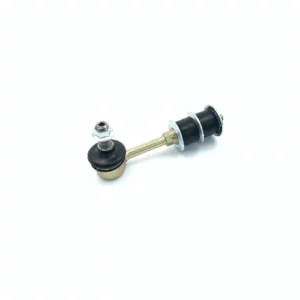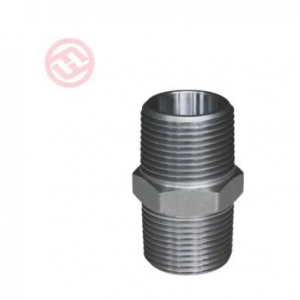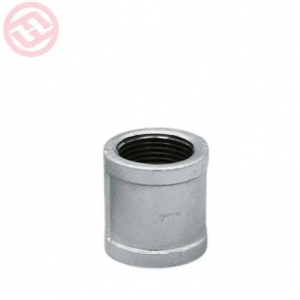Driving with a broken or damaged stabilizer link can have several potential consequences, affecting both the vehicle's handling and safety.
Here are some of the potential consequences:
Reduced Stability: The stabilizer link plays a crucial role in minimizing body roll and maintaining stability during cornering and maneuvering. When it is broken or damaged, the vehicle's stability can be compromised. This can lead to increased body roll, swaying, or a feeling of instability while driving, especially when making turns or navigating uneven road surfaces.
Poor Handling: A broken or damaged stabilizer link can negatively impact the vehicle's handling characteristics. It may result in imprecise steering response, reduced control, or a loss of traction. This can make it more challenging to maintain control of the vehicle, especially in emergency situations or during sudden maneuvers.
Uneven Tire Wear: The stabilizer link helps distribute the weight of the vehicle evenly across the tires during cornering. When it is not functioning correctly, the weight distribution may become uneven, leading to uneven tire wear. This can result in the need for premature tire replacement and affect overall tire performance.
Increased Stress on Other Suspension Components: When a stabilizer link is broken or damaged, it can put additional stress on other suspension components, such as the control arms, bushings, and struts. Over time, this increased stress can lead to accelerated wear and potential damage to these components, resulting in more extensive and costly repairs.
Noise and Vibration: A broken or damaged stabilizer link can cause noise and vibration from the suspension area. You may hear clunking, knocking, or rattling sounds while driving, stabilizer link car especially when going over bumps or uneven surfaces. These noises can be disruptive and indicate underlying suspension problems that require attention.
Safety Concerns: Driving with a broken or damaged stabilizer link compromises the overall safety of the vehicle. It can affect the vehicle's stability, handling, and control, increasing the risk of accidents, especially during emergency maneuvers or adverse road conditions.
Given these potential consequences, it is essential to address any issues with the stabilizer link promptly. If you suspect a problem with the stabilizer link or experience any of the symptoms mentioned, it's advisable to have your vehicle inspected by a qualified mechanic and have the necessary repairs or replacements performed to ensure safe and optimal operation of the suspension system.
What are the signs of a worn-out or faulty stabilizer link in a car?
A worn-out or faulty stabilizer link in a car can exhibit several signs or symptoms. Here are some common indications that there may be an issue with the stabilizer link:
Excessive Body Roll: One of the primary functions of the stabilizer link is to reduce body roll during cornering. If the stabilizer link is worn or faulty, you may notice increased body roll or a leaning sensation when taking turns, especially at higher speeds.
Poor Handling and Stability: A worn stabilizer link can lead to poor handling and reduced stability. You might experience a vague or imprecise steering response, difficulty maintaining control during maneuvers, or a general feeling of instability while driving.
Noise from the Suspension Area: A worn stabilizer link can produce clunking, knocking, or rattling noises from the suspension area, particularly when driving over bumps, uneven surfaces, or during cornering. These noises can indicate excessive play or movement in the stabilizer link.
Vibration or Steering Wheel Shake: If the stabilizer link is worn or damaged, it can result in vibrations or steering wheel shake, especially when driving over rough roads or at certain speeds. This can be felt through the steering wheel or the vehicle's body.
Uneven Tire Wear: A faulty stabilizer link can cause uneven tire wear, particularly on the front tires. You may notice excessive wear on the inner or outer edges of the tires, indicating an imbalance in weight distribution during cornering.
Loose or Damaged Stabilizer Link: A visual inspection of the stabilizer link may reveal visible signs of wear, damage, or looseness. Look for cracks, bends, or broken components. Additionally, check the condition of the bushings or ball joints associated with the stabilizer link.
Suspension System Warning Light: Some modern vehicles are equipped with a suspension system warning light. If there is a fault in the stabilizer link or other suspension components, this light may illuminate on the instrument cluster to indicate a problem.
It's important to note that these signs can also be indicative of other suspension system issues, so it's recommended to have a professional inspection performed if you suspect a problem with the stabilizer link. A qualified mechanic can assess the condition of the stabilizer link and other suspension components to determine the appropriate course of action, whether it involves repair or replacement.







